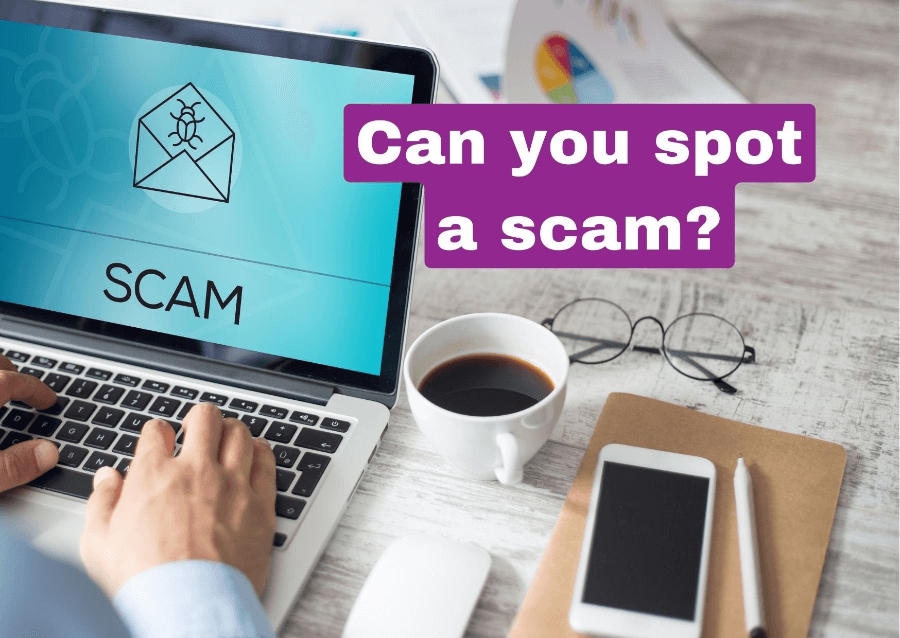📑Table of Contents:
- 1. The Investment Scam: “Guaranteed Returns”
- 2. The Social Media Scam: “It Looked Like a Great Deal”
- 3. The Tech Support Scam: “We Noticed an Issue With Your Device”
- 4. Online Marketplace Scams: Deals Too Good to Be True
- 5. Romance & Relationship Scams: Emotional Manipulation
- What to Do If You’ve Been Targeted
Every day, someone gets tricked. It could be a promise of fast money, a fake deal online, or a phony warning about your computer. Scams are evolving. And they’re good at looking real.
Here are three of the most common scams out there—and what you can do to avoid them.

1. The Investment Scam: “Guaranteed Returns”
A smooth talker promises quick returns. No risk. High profit. Maybe it comes through a text, an ad, or a friend’s recommendation. It all sounds perfect. Too perfect.
Here’s the truth: There’s no such thing as a guaranteed investment.
If someone claims there’s no risk, that’s your first red flag.
Many of these scams lure you in with small initial wins. You send $100, and they show you $150 in your “account.” That’s bait. Then they push for more money. And once they have it, they vanish.
Protect yourself:
- Research the company or person.
- Don’t trust pressure to act fast.
- Check if they’re registered with financial authorities.
Bottom line: If it sounds too good to be true, it is.
2. The Social Media Scam: “It Looked Like a Great Deal”
You’re scrolling. A deal pops up—new shoes, electronics, or even a vacation—at half the price. It looks real. Maybe there are reviews. Perhaps the site even looks legit.
But here’s the trick: Many of these are fake stores or impersonator accounts.
You pay. The product never comes. Or worse, you get a cheap knockoff—or nothing at all.
Protect yourself:
- Don’t click impulse deals. Pause. Investigate.
- Look for verified sellers.
- Reverse search product images.
- Check for real reviews outside of the site.
Tip: Scammers often use stolen photos and fake testimonials. Always check twice before you buy.
3. The Tech Support Scam: “We Noticed an Issue With Your Device”
This scam preys on panic. You get a call or a pop-up saying your computer has a virus. They say they’re from Microsoft, Apple, or “your bank’s IT team.” They need remote access.
Big red flag: Real companies don’t call you out of the blue for tech issues.
They don’t ask for passwords or security codes. Ever.
Once scammers get in, they can lock you out, steal files, or drain your accounts.
Protect yourself:
- Hang up on unexpected tech calls.
- Don’t share any verification codes.
- Never allow remote access unless you initiated the support session.
Remember: If someone says “we need access to help,” and you didn’t ask for help, it’s a scam.
4. Online Marketplace Scams: Deals Too Good to Be True
Online marketplaces like Facebook Marketplace, Craigslist, or eBay are convenient—but also crawling with fraudsters looking to make a quick buck.
How They Work
Scammers post fake listings for popular items like rental homes, pets, electronics, or cars. These listings often feature appealing prices and convincing photos. Once someone shows interest, the scammer pressures them to send payment via untraceable methods like gift cards, wire transfers, or cryptocurrency, then disappears.
Red Flags
- Seller refuses in-person meetups or insists on shipping only.
- The price is significantly lower than the market value.
- You’re asked to act immediately: “This is first-come, first-served!”
- Payment requests through non-secure, non-refundable methods.
How to Protect Yourself
- Stick to trusted platforms that offer buyer protection.
- Never pay upfront for items you haven’t seen in person.
- Insist on meeting in public, well-lit locations, preferably near police stations (some cities offer “safe exchange zones”).
5. Romance & Relationship Scams: Emotional Manipulation
Romance scams prey on people’s emotions—and their desire for connection. These scams don’t just break hearts; they drain bank accounts.
How They Work
Fraudsters create fake profiles on dating apps or social media platforms. They build emotional connections over weeks or months, gaining the victim’s trust. Then comes the ask—usually for money to help with a medical emergency, travel issue, or investment opportunity.
Red Flags
- The relationship progresses very quickly and feels “too good to be true.”
- The person avoids video calls or meeting in person.
- They bring up money problems out of the blue—often with a dramatic backstory.
How to Protect Yourself
- Be cautious with online relationships that remain virtual.
- Never send money or financial info to someone you haven’t met in real life.
- Use tools like reverse image search to check if their profile photo is stolen from somewhere else.
What to Do If You’ve Been Targeted
If you suspect you’ve fallen for a scam—or are being targeted—take action quickly to protect yourself.
Steps to Take:
- Stop communication immediately. Block and report the scammer.
- Report the incident to the appropriate agency:
- In the U.S.: Federal Trade Commission (FTC) via reportfraud.ftc.gov
- For other countries: contact your national consumer protection authority.
- Secure your accounts by changing all related passwords and enabling two-factor authentication.
- If you’ve sent money or shared financial info, contact your bank or credit card provider right away to attempt a reversal or freeze.
💡 Don’t be embarrassed—scams are designed to deceive, and reporting them can help protect others.

Final Thoughts
Scams thrive on urgency and emotion. They want you to react, not think. The best defense? Slow down. Verify everything. And stay informed.
You don’t need to live in fear, but you do need to stay sharp.





